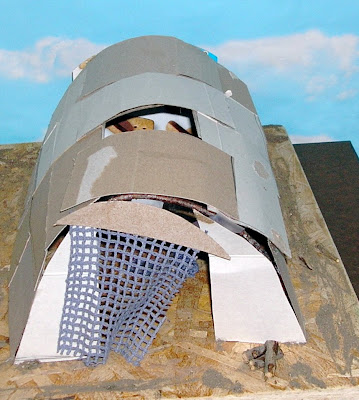Mrs. Yollis’ class was learning about Native American tribes of the United States. We created posters to help us share what we learned for these four interesting tribes.
Each tribe was from a different region of the U.S.: Navajo, Cherokee, Iroquois, and Yurok. We used the U.S. map that we created earlier in the year to show where each tribe lived. Here are a few words from the “tribes” themselves.
* * * * *
The Yurok
By Shane F., Sean, Taylor S., Amanda, and Marcus
The caring Yurok tribe lived along the northern coast of California. This region where the Pacific Ocean meets the land was full of fish, sea lions, deer, and acorns.

The men of the Yurok tribe did the hunting, and the women did the cooking. The shelter was made from the tallest trees in the world, the redwood trees. The plank house was partly underground and had a circular hole for a door. The Yurok money was made of long smooth shells called tooth shells. They came from shellfish that lived in deep water along the Pacific coast. In the Yurok tribe, the word for bald eagle was tohet, and the fish were called me’woo. In our opinion, we think that the Yurok tribe are helpful.
* * * * *
The Iroquois
By Warren, James, Chloe, Shane J., and Lexi
The Iroquois lived south of Lake Ontario and west of the beautiful Appalachian Mountains. They hunted deer, bear, beaver, and what they could find in their environment. Also, they harvested the three sisters, corn, beans, and squash.

Their houses, called longhouses, were made out of posts, bark, and animal hide. About six to ten families lived in one shelter.

(Extra credit longhouse created by Lexi and Taylor S.)
* * * * *
The Cherokee
By Taylor G., Clementine, Jonah, Garrison, and Alasia
The Cherokee lived in the beautiful southeast Appalachian Mountains. Because of the plentiful environment, they had deer and rabbits to hunt. Also, they fished, collected turtles, and gathered acorns and fruit. Another way they survived was to farm corn, beans, and squash.
The Cherokee had a winter home and a summer home for special seasons. The winter home was shaped like a small dome and the summer home was shaped like a modern day house, except that it was made of logs. The Cherokee towns had more than a hundred people living in them.
The Cherokee had a special language made by a smart man named Sequoyah. The language had 86 letters, or characters, in it. His daughter was the first one to use his language. Here are some of the characters.

Not all of the Cherokee life was great. They had a sorrowful journey that was called the Trail of Tears. They were forced to move from their homes and unfortunately, many people passed away. We hope you enjoyed our presentation on the Cherokee Indians!
* * * * *
The Navajo
By Bethany, Emily, Matthew, Kyle, and Behyan
The Navajo lived in the Basin and Range region near the Rocky Mountains. It was a sandy, dry area, but they managed to farm. Beans, squash, and corn are what they harvested. They also tended sheep and goats.

The Navajo used mud and wooden poles to build their hogans, or house. When they where done they would let them harden in the sun. The doors to all hogans faced east, where the sun rises.

(Extra credit hogan created by Bethany.)
 (Extra credit tipi created by Taylor G. This was the shelter for the Sioux of the plains.)
(Extra credit tipi created by Taylor G. This was the shelter for the Sioux of the plains.)
* * * * *
Several students were interested in weaving mats like some Native Americans did . They used plants they found in their yards. Here are three mats that were woven by students. Clementine and Taylor S. used agapanthus leaves. They were long and they seemed like they would be a good material. Bethany and James both wove yucca leaves that we learned the Chumash Indians used to use.
 After weeks of drying out, one weaving material turned out to be useless. It crumbled into pieces!
After weeks of drying out, one weaving material turned out to be useless. It crumbled into pieces!
 The yucca mats were strong, even after they dried out. The Chumash were smart to weave with such a strong material!
The yucca mats were strong, even after they dried out. The Chumash were smart to weave with such a strong material!

We enjoyed learning about America's history, and we hope you enjoy our post!
* * * * *
Comment Ideas: Compare the tribes! How are they alike or different?
Do you know any other plants that can be used for weaving?






















